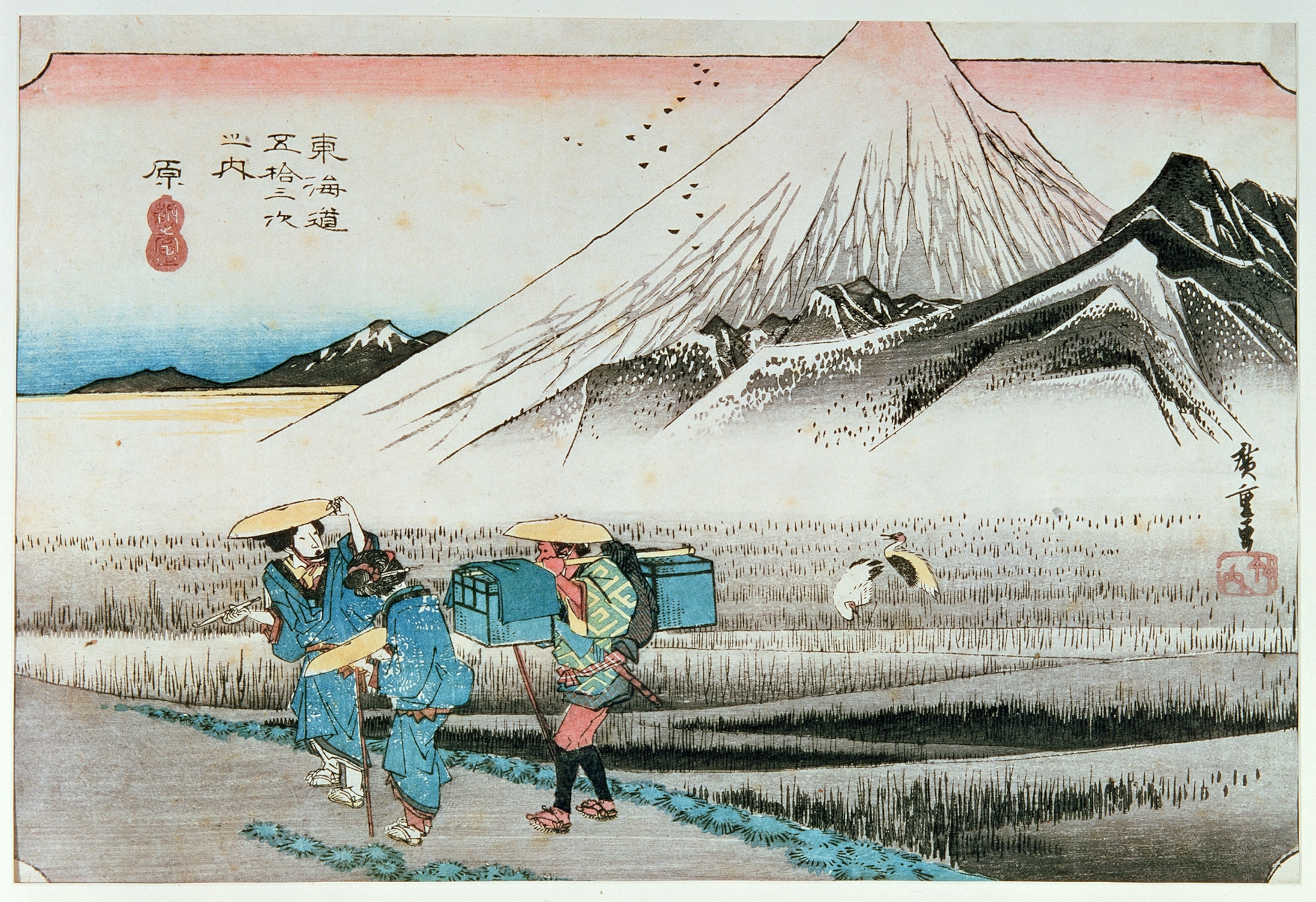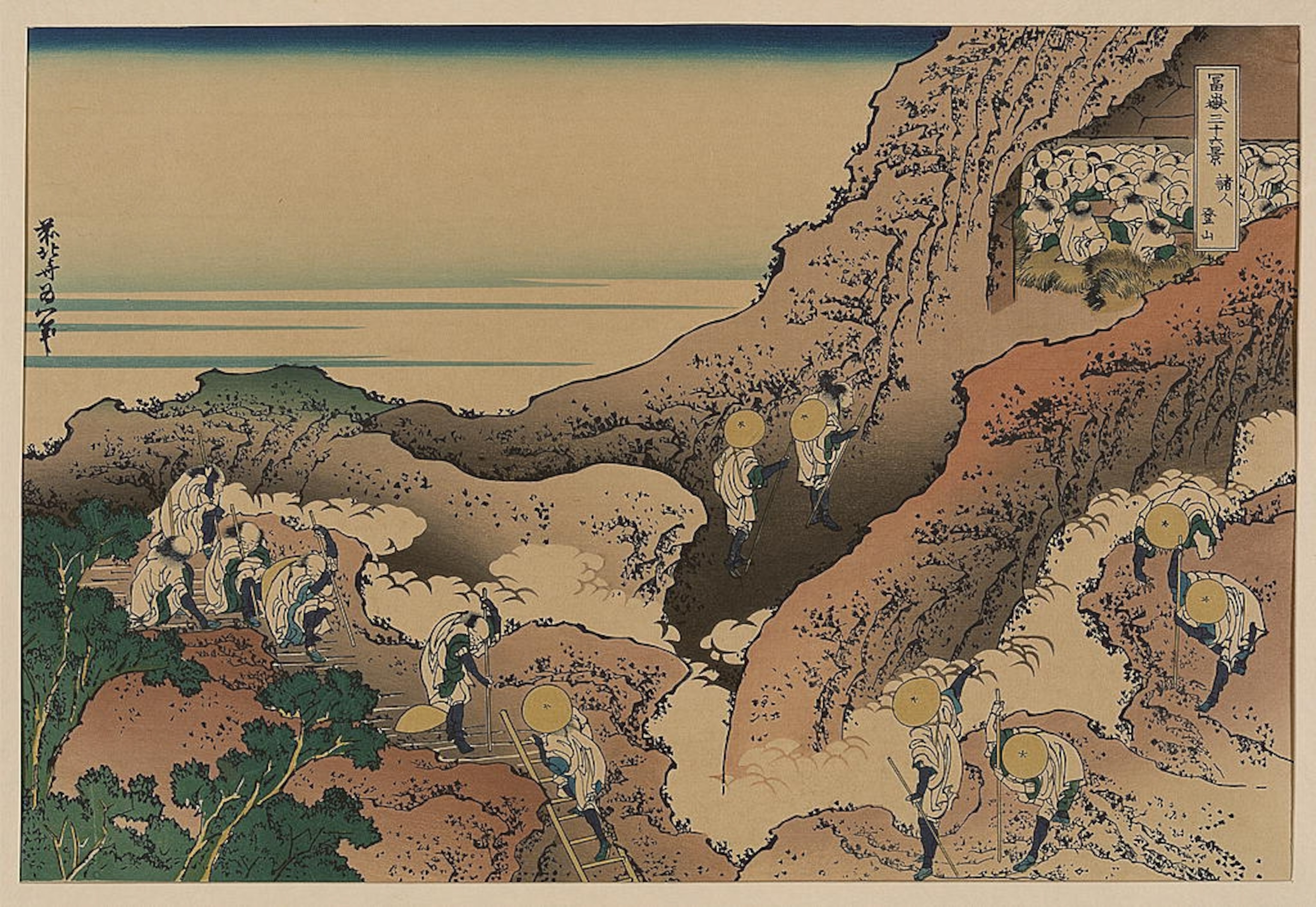For centuries, the ascent of Mount Fuji—Japan’s highest and most revered peak—was strictly forbidden to women under the custom of nyonin kinsei (literally, “women-prohibited”). Considered sacred and the abode of the goddess Konohanasakuya-hime, the mountain was a path of purification for Shinto and Buddhist pilgrims, a journey from which women were barred until the Meiji Restoration era. Yet, long before the ban was officially lifted, one woman dared to defy this deeply entrenched religious and social law. In the autumn of 1832, Tatsu Takayama, a woman of samurai lineage and a devout member of the Fuji-kō religious confraternity, successfully reached the summit. Her covert, courageous pilgrimage, undertaken in disguise and against enormous social risk, stands as a singular act of spiritual and gender defiance that paved the way for future generations of Japanese female mountaineers.
The Rule of Exclusion: Nyonin Kinsei and Sacred Peaks
The ban on women climbing Mount Fuji was rooted in the long-standing Japanese religious custom of nyonin kinsei, which prohibited women from entering sacred spaces, including many high mountains and Shinto shrines. This exclusion was primarily driven by the belief in Shinto and folk Buddhist traditions that women were ritually impure due to menstruation, which would defile the sacred grounds and offend the mountain deity.

Mount Fuji, as the dwelling place of the goddess Sengen-Sama (Konohanasakuya), was the ultimate sacred pilgrimage site. During the Edo period (1603-1868), strict checkpoints and guards were stationed on the trails to enforce the ban, turning away any women who tried to ascend above a certain altitude (often the Second or Fourth Station). Generations of devout women, therefore, were forced to pray to the mountain “from afar,” building shrines at the base and relying on male family members to carry their prayers to the summit.
However, not everyone accepted this custom. Within the Fuji-kō, a popular folk-religious group centered on the worship of the volcano, there were progressive leaders who believed in the equality of spiritual devotion. It was from this dissenting group that Tatsu Takayama found the support necessary to challenge the established religious order.
Tatsu Takayama’s Act of Defiance: The Covert Ascent of 1832
The historic climb by Tatsu Takayama took place in October 1832, a time when such an act risked severe punishment or even exile. Takayama, then 25 years old, was a maid in a Tokugawa mansion and a devoted follower of the Fuji-kō sect. Her pilgrimage was orchestrated by the elderly Fuji-kō priest, Sanshi (Otani Sanshi), a leader who believed that women, too, were worthy of scaling the sacred mountain.
To evade detection and the guards stationed along the Yoshida trailhead, Tatsu undertook the dangerous journey disguised in men’s clothing, traveling with Sanshi and five male companions. The climb was fraught with difficulty, not only due to the secrecy but also because of the late season; the presence of snow and ice made the ascent perilous, even for experienced male pilgrims.

The climax of her journey is recorded in the Takayama Tatsuko kankei shiryō, a compilation of historical records, where she is quoted as saying: “I want to climb up to the summit even if I should die at the moment when I reach it.” This quote emphasizes the profound spiritual urgency that drove her act. The Fuji-kō records simply state: “A woman born in the Year of the Dragon climbed the mountain in the Year of the Dragon,” marking her accomplishment for posterity within the sect’s private scrolls.
The Immediate Aftermath and Historical Oblivion
Despite the feudal authorities largely choosing to overlook her transgression, the immediate reaction to Tatsu’s ascent was mixed, and ultimately led to her name being largely forgotten by mainstream history for nearly two centuries. The local villagers near the mountain’s base, upholding the traditional reverence, took a dimmer view of the defiance.

When the region suffered natural disasters in the years immediately following the climb, the devout communities often blamed Tatsu’s violation of the sacred ban. This social stigma and the secrecy surrounding her identity—only preserved within the records of the sympathetic Fuji-kō sect—ensured that Tatsu Takayama’s achievement was not widely celebrated or recorded in official Japanese history. She became a marginalized figure, a cautionary tale for those who dared to break the ancient prohibition.
It was only much later, following the Meiji Restoration, that the official government edict of 1872 fully abolished the practice of nyonin kinsei on temple and shrine lands, including mountains. Although foreign women had reportedly made ascents around the same period, Tatsu Takayama holds the distinction of being the first known Japanese woman on record to have successfully and intentionally scaled the sacred summit, turning a secretive spiritual act into a monumental, though initially forgotten, milestone for women’s rights in Japan.




